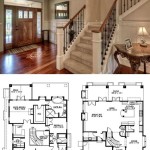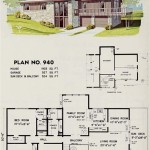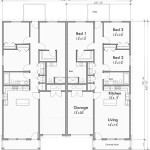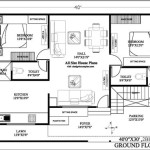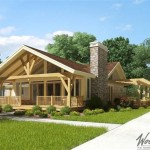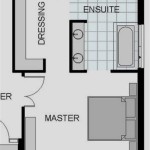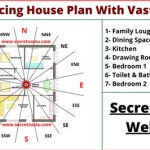Modern House Designs And Floor Plans In 3D
The advent of 3D modeling and visualization technologies has fundamentally transformed the landscape of modern house design and floor plan creation. Architects, designers, and homeowners alike are increasingly leveraging these tools to explore design possibilities, refine spatial arrangements, and communicate their vision with unprecedented clarity. This article explores the impact of 3D technology on modern house design and floor plans, examining its benefits, applications, and key considerations.
Modern house design philosophy emphasizes functionality, simplicity, and a seamless integration with the surrounding environment. Clean lines, open floor plans, and abundant natural light are hallmarks of this aesthetic. 3D technology empowers designers to meticulously craft these spaces, experimenting with different layouts, materials, and lighting schemes in a virtual environment before committing to physical construction. This iterative design process allows for data-driven decision-making and minimizes costly errors during the building phase.
The ability to visualize a house in three dimensions offers significant advantages over traditional 2D blueprints. Clients can gain a more intuitive understanding of the spatial relationships, volume, and overall aesthetic of the proposed design. They can virtually "walk through" the rooms, assess the flow of movement, and identify potential areas for improvement. This enhanced level of engagement fosters a more collaborative design process, ensuring that the final product aligns with the client's specific needs and preferences.
Enhanced Visualization and Communication
One of the most significant benefits of 3D house designs and floor plans is the enhanced level of visualization they provide. Traditional 2D blueprints can be difficult for non-professionals to interpret, often requiring specialized knowledge to fully grasp the intended spatial arrangement. 3D models, on the other hand, offer a realistic and easily understandable representation of the house. They allow clients to visualize the finished product in detail, including furniture placement, color schemes, and material finishes.
This improved visualization facilitates clearer communication between architects, designers, and clients. By sharing 3D models and renderings, architects can effectively convey their design ideas and ensure that the client's vision is accurately captured. Clients can provide more specific and informed feedback, leading to fewer misunderstandings and revisions during the construction process. The use of 3D technology also helps to streamline the permitting process, as planning authorities can more easily assess the proposed design and its compliance with building codes.
Moreover, 3D visualization can be used to showcase the house design to potential buyers or investors. Realistic renderings and virtual tours can create a compelling and immersive experience, allowing viewers to appreciate the unique features and benefits of the property. This can be particularly valuable in pre-construction sales, where buyers need to rely on visual representations to make informed decisions.
The advancements in rendering software have enabled the creation of photorealistic images and animations that blur the line between virtual and real. These high-quality visuals can be used for marketing materials, website presentations, and virtual reality experiences, providing a powerful tool for promoting and selling modern house designs.
Optimized Space Planning and Functionality
Modern house design places a strong emphasis on efficient space planning and functionality. 3D modeling tools provide architects with the ability to analyze and optimize the layout of the house, ensuring that every square foot is utilized effectively. They can experiment with different room configurations, furniture arrangements, and circulation patterns to create a comfortable and functional living environment.
3D floor plans allow designers to assess the flow of movement within the house, identifying and eliminating potential bottlenecks or awkward spaces. They can simulate different scenarios, such as entertaining guests or accommodating a growing family, to ensure that the layout meets the specific needs of the occupants. This level of detail is difficult to achieve with traditional 2D blueprints, which often lack the visual context needed to fully understand the spatial implications of different design choices.
Furthermore, 3D modeling enables architects to integrate smart home technology seamlessly into the design. They can visualize the placement of lighting fixtures, security systems, and entertainment devices, ensuring that they are strategically located and aesthetically integrated into the overall design. This proactive approach to smart home integration can enhance the functionality and convenience of the house, while also minimizing clutter and visual distractions.
The use of 3D technology also facilitates the design of accessible and inclusive homes. Architects can simulate the experience of users with disabilities, ensuring that the layout and features of the house are accessible to everyone. This includes considerations such as wheelchair maneuvering space, grab bar placement, and accessible kitchen and bathroom designs.
Beyond the internal layout, 3D modeling also allows for careful consideration of the relationship between the house and the surrounding landscape. Architects can visualize how the house will interact with natural light, sunlight, and views, optimizing its orientation and placement to maximize energy efficiency and create a harmonious connection with the environment.
Cost Reduction and Error Minimization
While the initial investment in 3D modeling software and training may seem significant, the long-term cost savings and error minimization benefits can outweigh these expenses. By identifying potential design flaws and spatial inefficiencies early in the design process, architects can avoid costly revisions and construction delays. 3D models allow for a more thorough review of the design before construction begins, reducing the likelihood of unexpected problems arising during the building phase.
The ability to visualize the house in three dimensions also helps to improve communication between the various stakeholders involved in the project, including architects, contractors, and subcontractors. Clear and accurate 3D models can reduce the risk of miscommunication and errors, ensuring that everyone is on the same page and working towards the same goal.
Moreover, 3D modeling can facilitate more accurate cost estimation and material procurement. By creating a detailed digital model of the house, architects can generate precise material lists and quantities, minimizing waste and reducing the risk of overspending. They can also use 3D models to explore different material options and compare their costs, allowing them to make informed decisions that balance aesthetic considerations with budgetary constraints.
The use of 3D printing technology is also gaining traction in the construction industry. Architects can use 3D models to create prototypes of building components or even entire houses, allowing them to test and refine their designs before committing to full-scale construction. This can be particularly useful for complex or innovative designs, where traditional construction methods may be challenging or expensive.
In summary, the adoption of 3D technology in modern house design and floor plan creation provides a range of benefits, including enhanced visualization, optimized space planning, and cost reduction. As technology continues to evolve, the role of 3D modeling in architecture and construction is likely to become even more significant, transforming the way houses are designed and built.

Modern House 3d Floor Plan Ideas For Your Property Design Contemporary Home Plans

3d Floor Plan Modern House Plans 2 Y Design

3d House Plans Interior Design Ideas

30 Modern 3d Floor Plans Help You To Make Your Dream Home Engineering Discoveries

3d Floor Plan Services Architectural Rendering Small House Plans Bedroom

20 Splendid House Plans In 3d Pinoy

3d Floor Plans Images Browse 65 771 Stock Photos Vectors And Adobe

3d Floor Plans Renderings Visualizations Fast Delivery

Modern Houses Map Designing Service In Pan

3d Floor Plan Detailled Modern Model Cgtrader

